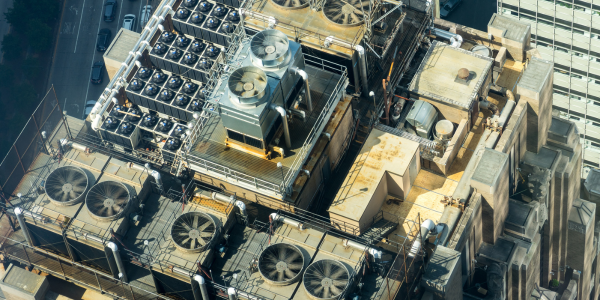Biofilm is a frequent problem in HVAC systems that can cause equipment corrosion, energy inefficiency, and poor indoor air quality. Traditional methods of cleaning and disinfecting these systems can be costly, invasive, and potentially hazardous to human health and the environment. However, with the emergence of nanobubble technology, a new and innovative approach to biofilm elimination is at hand. This article will explore how nanobubbles work to eliminate biofilm, as well as the benefits of this technology for HVAC systems.
Formation of Nanobubbles: The nanobubble technology utilizes an electrochemical method to create bubbles with a diameter of fewer than 100 nm. These bubbles are so tiny they can penetrate even the smallest crevices and stagnant water areas of HVAC systems. This technique is done through a nanobubble generator installed in the HVAC system.
Penetration and Collision: Once formed, the nanobubbles move with the water flow and contact surfaces that are colonized by biofilm. Like a mini scrub brush, these bubbles stick to and penetrate the film layer. This causes the biofilm to detach, releasing the contaminants that usually hide packed under film barriers. The nanobubbles also collide with each other, breaking it down further, and ultimately forming a foam layer.
Oxidation and Disinfection: As the foam layer forms, the nanobubbles also begin to oxidize the biofilm and eradicate biofilm cells. This process releases a series of oxidants, such as hydroxyl radicals, hydrogen peroxide, and peroxone, which are effective in disinfecting HVAC systems. Oxidation has a significant effect on biofilms’ structure, making them more prone to release bacteria, viruses, and other harmful microbes into the HVAC systems.
Cleaning and Flushing: The foam layer created by nanobubbles traps the biofilm particles, which are effectively removed from the systems through a final cleaning and flushing process. The foam formed by nanobubbles in the presence of biofilm particulate matter facilitates the mechanical removal of biofilm and all its contaminants.
Benefits of Using Nanobubble Technology:
Enhanced Efficiency: Nanobubble technology ensures that HVAC systems operate efficiently. By removing accumulated biofilms, the systems can operate at optimal capacity while reducing the risk of equipment corrosion, leading to an improvement in energy efficiency and equipment lifespan.
Extended Equipment Lifespan: Nanobubbles prevent the premature breakdown of the equipment by eliminating the need for aggressive mechanical cleaning techniques that can damage the system. By doing so, it extends the useful life of HVAC equipment.
Improved Indoor Air Quality: Since biofilm in HVAC increases odors, allergens, and infections, nanobubbles ensure the working of the system free from any harmful contaminants. Indoor air quality improves, and occupants of the building will invariably experience better air quality.
Sustainable and Environmentally Friendly: Nanobubble technology treatments require an insignificant amount of water, chemicals, or electricity usage. This system also reduces the risk of chemical contamination of indoor air and water sources.
Non-Invasive and Continuous Treatment:
Nanobubble technology is noninvasive and does not require any shutdown procedures during treatment. Treatment can be processed while the system is in operation, reducing disturbance to activities on the premises.
Cost-Effective Maintenance: Nanobubble technology is cost-effective for long-term HVAC system maintenance when compared to conventional methods that can sometimes have higher costs while also exposing occupants to hazardous materials.
In conclusion, nanobubble technology is an innovative approach for the removal of biofilms from HVAC systems. It provides an environmentally friendly, non-invasive, and cost-effective method of maintenance that ensures optimal HVAC system operation. The technology is sustainable, improves indoor air quality, and extends the lifespan of the HVAC equipment. Investing in nanobubble technology for the elimination of biofilm is a smart choice for any property owner or facility manager looking to maintain a safe, healthy, and energy-efficient HVAC system.
